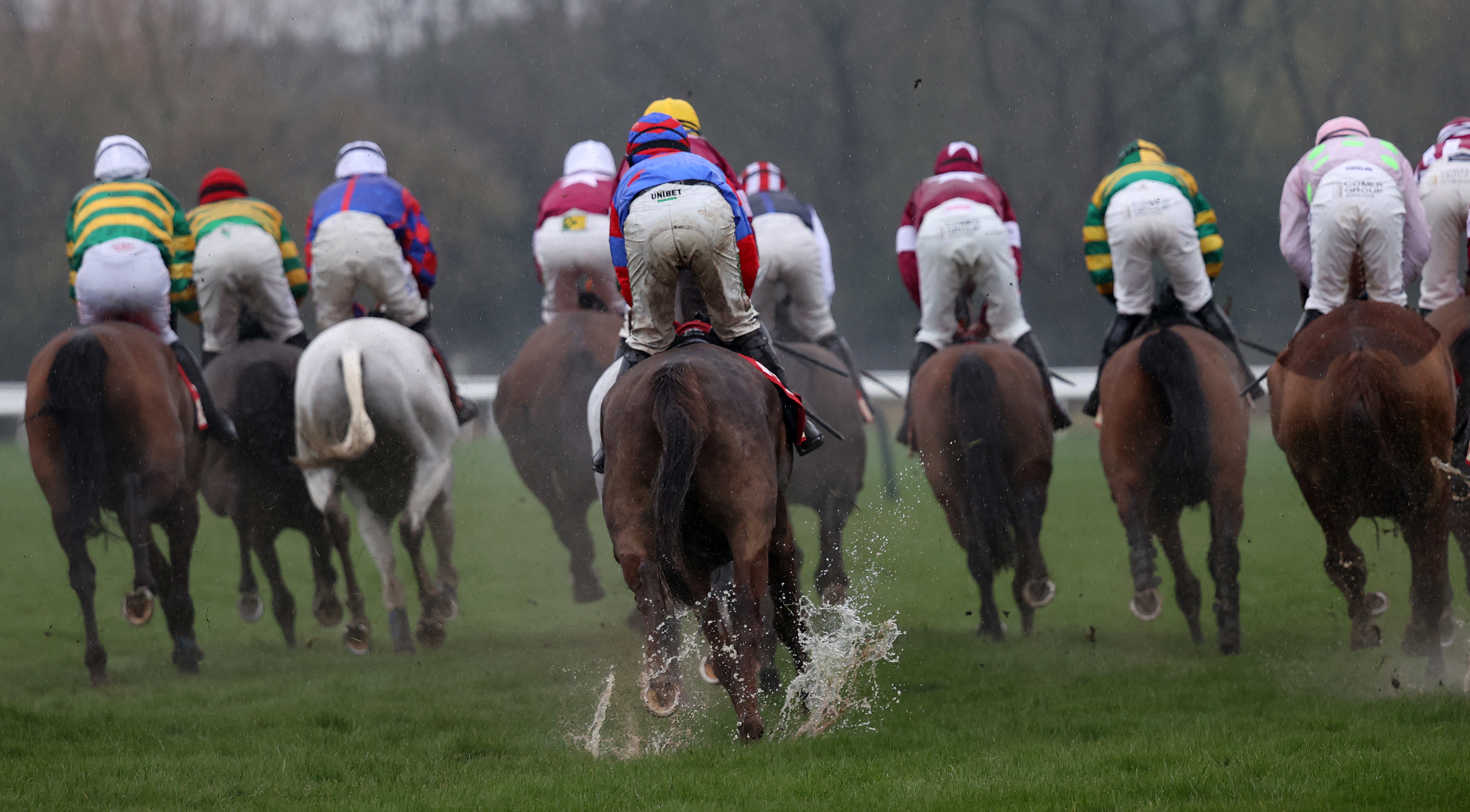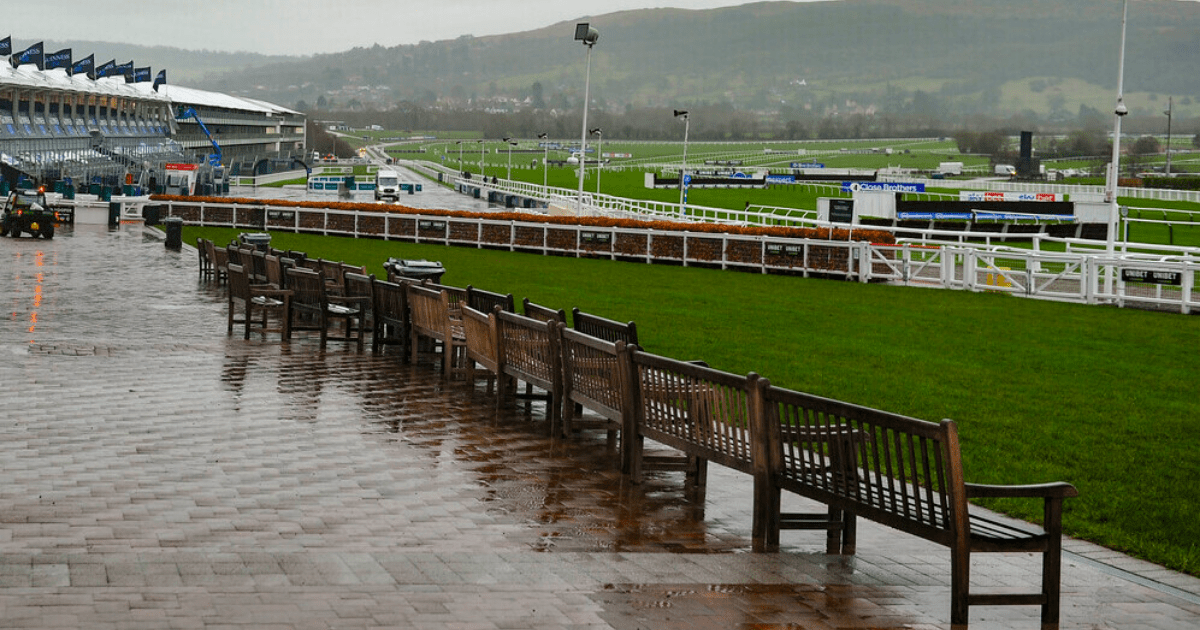Inspection Alert: Track 'Waterlogged'
An inspection has been called at Cheltenham due to one of the tracks being described as 'waterlogged' amidst a heavy downpour. The Cross Country race scheduled for Wednesday might be rescheduled to Friday if conditions do not improve.
Potential Rescheduling of Big Race
The Cross Country track, known for its inner location on the main racecourse, is currently waterlogged. With the race fast approaching, organizers are considering moving it to Friday, coinciding with Gold Cup day, to ensure a successful event.
Concerns and Contingency Plans
Following a significant increase in rainfall, an inspection has been scheduled for Wednesday morning. If the track is deemed unsuitable for racing, the Glenfarclas Cross-Country Chase could be postponed to Friday. Organizers are working closely with the British Horseracing Authority to find a suitable solution.
Track Conditions and Weather Forecast
Despite the challenges posed by the weather, the Old and New Course at Cheltenham have coped well, with the ground now categorized as Soft, Heavy in Places. While rain is expected to persist, hopes are high for drier conditions in the coming days, aiding in the track's recovery.

Outlook for the Week
Although Wednesday may see strong gusts of up to 32mph and no rain, Thursday also appears promising with only a 50% chance of rain in the evening. Friday, the anticipated Gold Cup day, might experience isolated showers but is expected to clear up by race time at 3.30pm.
Frequently Asked Questions
Are there different types of horse races in the UK?
There are several types of horse race in the UK. These include Flat racing, National Hunt racing (or jump racing), and other races. Flat racing takes place over level tracks from five furlongs to two miles. National Hunt racing emphasizes both the speed and jumping ability of the horse, with races like hurdles and steeplechases featuring a series of obstacles. In addition to these two categories, there are variations, such as handicaps (for maidens), conditions races and handicaps. Each of these has specific rules and entry criteria.
What does ‘photofinish’ in horseracing mean?
The ‘photo finish,’ is when two or multiple horses cross the finishing line so closely together that the winner cannot be determined with the naked eye. In such cases, race officials utilize a finish-line cam that takes images at high speeds in order to examine the exact moment when each horse’s face reaches line. The photo finish allows officials to accurately determine official finishing order.
What are the most prestigious horse racing events in the UK?
The United Kingdom hosts many acclaimed horse-racing events that are popular around the globe. The most prestigious of these include Royal Ascot and the Grand National in Aintree. These events not only showcase the finest equine talent but also offer rich history and tradition, and have become social occasions with distinctive dress codes and royal patronage.
How can the safety of riders and horses be maintained during a horse race?
The safety and welfare of both riders and horses are paramount in UK Horse Racing. There are strict regulations in place that ensure racecourses adhere to high safety standards. Horses must be examined before and immediately after races. The jockeys wear protective equipment like body protectors or helmets. Rapid response teams and veterinarians are also on hand to deal with any incident.
What does a racing term describing a horse as “stayer” mean?
In racing terminology, a ‘stayer’ is a type of horse that excels on long distances. Typically, the distances exceed one mile. Stayers must possess not only speed but also endurance to maintain a strong pace over extended races. Renowned keepers often compete at long-distance races, such as the Ascot Gold Cup.
How can I learn to read a racecard?
Reading a racecard is crucial for understanding the key information about a race and the horses running in it. A racecard usually lists information such as the horse’s name, age and weight, along with the trainer, jockey and form figures that show past performance. This data will help you better understand the odds of each horse and make informed decisions when betting. As part of customer service, many racecourses and betting companies offer guides on how to read racecards.
Statistics
- The annual Cheltenham Festival has an economic impact of over £100 million for the local Gloucestershire economy.
- The National Hunt racing season in the UK sees approximately 1,000 races with hurdles or fences each year.
- Approximately 6 million people attend horse racing events in the UK each year, making it the second most popular spectator sport in the country.
- In the UK, more than 14,000 people are employed directly in the horse racing industry.
- Horse racing contributes an estimated £3.7 billion to the UK economy directly and indirectly each year.
- British horse racing generates over £350 million in annual tax revenues for the UK government.
External Links
thejockeyclub.co.uk
thejockeyclub.co.uk
racingpost.com
betfair.com
timeform.com
britishhorseracingmuseum.org.uk
How To
How to Interpret Horse Racing Odds
It is important to understand horse racing odds in order to make informed bets. The odds are a measure of the probability that a certain outcome will occur and can be used to determine your potential winnings. In the UK they are typically displayed as fractions, such 5/1. If the horse wins, you will win PS5 for each PS1 staked. Consider that odds can reflect the bookmaker’s view of the chances of a particular horse, which is influenced by conditions, market sentiment and form. To calculate your potential return, multiply your stake by the numerator (top number) and then add your original stake to get the total potential payout.

